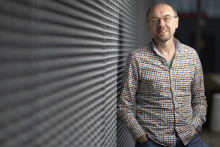Such places are simply asking for urban sprawl, where stubborn people move to thinly populated suburban areas and live as they please. It is far more efficient to pack people close together into skyscrapers, as it reduces car usage and harmful emissions. Additionally, people are far easier to manage if they all live in an organised, hypermodern environment full of sensors and cameras that produce valuable data. If this data is combined and analysed in the right way, it can lead to solutions to countless urban problems such as traffic jams, pollution and crime. Who wouldn’t want that?
In the cover story, professor Boudewijn Haverkort explains that a city can be compared to a human body. All organs would be able to work together in perfect harmony if every street and every building, every device and every living creature were tailored to people's wishes and the wellbeing of the whole, using the right technology. However, what wishes are still desirable in a smart city? The wish to drive your own gas-guzzling old timer is a tricky one, as is the wish to drink alcohol or go to bed too late. If the smart city is a body, are the people its conscious brain or are they like red blood cells that can only go with the flow?
In the book Calm Chaos by the Italian author Sandro Veronesi, the main character talks about the joy of ignoring a navigation system’s directions and stubbornly turning right whenever it tells you to turn left. Of course, turning left might be far more efficient and sensible than turning right or going straight on. More efficiency does not necessarily make us happy, however. The human way of living life is quite messy, as Veronesi demonstrates. We are just going about our business and often get ourselves into trouble. There is surely a better way, but how far are we willing to go when it comes to streamlining our existence to maximise its efficiency?
The typical smart city of the future does not exist yet and the political decisions that it requires will have different outcomes in China than in Europe. I can only hope that my city will leave enough room for the inefficient mess we desperately need sometimes.
You can also find this column in the latest issue of our Science & Technology Magazine. Grab a printed copy at the UT campus or view the entire magazine online.







